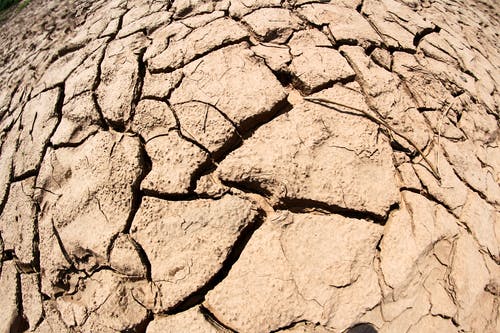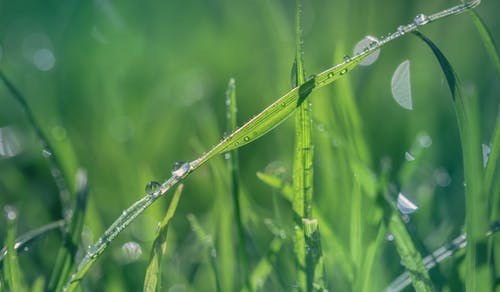No Splash, No Cash!
We always know when it is summer here in Ireland – the rain is warmer! The Emerald Isle is soaked, and the winter drizzle shows no sign of relenting. But it will. When it does, I will walk down the country lane and enjoy a million shades of green in this very lush land.
I spare a thought for my friends in Australia where temperatures are flirting with record highs of 50c. Not a hint of rain in sight. They are experiencing severe drought.
If you were asked what defines a drought, you would probably think of it as a sustained period without rainfall. However, there are areas in the world where it is normal to have little or no rainfall, particularly at certain times of the year. There are many definitions and classifications of drought based on variables such as rainfall, temperature, humidity, evaporation from free water and soil moisture. Drought is generally described as rainfall substantially below what is the ‘normal’ value for the area concerned, and which leads to adverse consequences for human welfare

Types (stages) of drought
- • Meteorological drought. This occurs when there is a lack of precipitation over a period of time. These measures will be different for every region depending on the climatic variables.
- • Hydrological drought. This occurs when the amount of rain is insufficient to maintain normal flows in streams and rivers or normal levels of lakes and reservoirs.
- • Agricultural drought. This occurs when soil moisture is inadequate to sustain natural vegetation, crops, pastures or other agricultural systems.
- • Socio-economic drought. The supply of some economic goods and services is weather dependent, such as hay and the production of electricity. This type of drought occurs when, following an increase in population or consumption, demand increases and exceeds supply due to a shortfall in water supply.
- • Ecological drought. This is usually the last stage when the environment is so stressed that the natural eco-system fails. For example, cattle eat even the roots of grass, trees are cut down to make charcoal to sell: when the rains come, the pasture cannot recover. This leads to increasing land degradation and possible desertification.

Problems caused by drought
The most obvious problem caused by drought conditions is lack of water. This impacts many aspects of life in drought-affected communities, including lack of safe drinking water, washing facilities and the inability to grow crops. Droughts endanger peoples’ lives through thirst and the spread of disease.
Lack of water also has a huge environmental impact as plants, animals and livestock depend on water to survive. A drought can shrink their food supply, and their habitat can be damaged. In severe drought conditions, these habitats might take many years to recover, or they may not recover at all. Approximately 80% of the population in northern Uganda are nomadic pastoralists who rely on finding water and grazing areas for their livestock to survive.
Drought also has an economic impact on farming communities as it poses a threat to crop production and livestock. Agriculture is the main source of livelihood for 77% of Ugandans, so the impact of drought is felt across the whole community.
Flooding can occur when the rains finally come after months of arid, drought conditions. Very heavy downpours can lead to flash flooding if the land has been baked dry for months. In early 2018, heavy rainfall and flash floods across East Africa, especially Kenya and Rwanda, left over 300 people dead and thousands displaced from their homes. These severe weather conditions compounded outbreaks of cholera and an epidemic of the mosquito-borne chikungunya virus, resulting in several deaths.
How has climate change affected drought?
Uganda, like many East African countries, used to have consistent weather patterns and seasons. Historically the rainy season lasts from April to September and the dry season from November to March. However, the effects of climate change, particularly the El Niño weather patterns, are impacting this season pattern. The rainy seasons are more difficult to predict – they tend to start later and are heavier when they arrive, causing flash flooding. The dry seasons have seen an increase in temperatures and are lasting longer. Both situations are seriously affecting the livelihoods of local people.

How often does drought occur in Uganda?
A study in 2016 by Makerere University in Kampala analysed monthly rainfall data from 1943 to 1982, breaking the analysis down into 16 climatological areas in Uganda. They found that seven of these areas, mainly in the north-east and south-west of the country, were prone to drought. The study found that approximately every 12.5-years drought conditions would occur in all drought-prone areas at the same time. It also concluded that the interval between droughts in a particular drought zone was between one and six years, although one year was the most prevalent.
What can be done to tackle drought?
There has been a loss of forestation over several years in Uganda as farmers create more farming land in order to grow more crops. This has had a negative effect, as when rain falls, the lack of trees means that soil erosion occurs, and less water is retained in the soil. Several projects across Uganda are attempting to address this issue by encouraging the planting of more trees.
The Ugandan government is also tackling the issues caused by drought with several projects involving the United Nations Food and Agricultural Organisation (FAO) and other NGOs. Together they are promoting sustainable farming methods, such as growing vegetables in planting sacks and using drought-tolerant crops to increase crop production and food security. FAO is also training farmers in sustainable farming and animal husbandry practices to reduce the risk of livestock diseases.
Projects have been initiated to improve access to clean water for personal consumption and agriculture. There are also projects to improve water conservation by repairing wells and dams and building new ones.
The Ugandan government has also invested in a Disaster Risk Reduction programme which attempts to predict droughts using the latest technology. The programme puts in place strategies to enable communities to be better prepared to deal with drought conditions.
Feed A Million Mouths International supports people across five key groups. These are: Street Children, Pregnant Teens, At-Risk Communities, the Chronically Ill and Refugees. Many of the people who rely on FAMMI’s support are either directly or indirectly affected by drought. Few regions on Earth are likely to worst affected by climate change than Africa and this makes FAMMi’s work all the more important. Please consider partnering with FAMMI today and help us help the most at-risk people in Uganda and Eastern Africa. To ‘Buy Breakfast’, visit https://paintandparty.org/buy-breakfast.html.
About the author:
Judy Williams is in her final year of a degree in Journalism at Dublin City University. She is pursuing a career change, having previously worked in IT in London, before returning home to Dublin to be a full-time carer for her father for five years. She has a particular interest in advocacy and human interest stories.
